Dear creative friends,
Welcome to the latest edition of the StudioWorks Journal! I am filled with gratitude to have you by my side on this creative journey, and I can't wait to share this exciting new exploration with you. This month, we delve into the intrinsic connection between art and poetry, and how the power of words can inspire and elevate our artistic expressions.
As artists, we are masters of visual language, but what if we could go even deeper? What if we could unlock the profound synergy between color, emotion, and words to create art that resonates on a soul-deep level? Together, let's embark on a quest to discover how poetry can be a wellspring of inspiration for our artistic endeavors.
Let’s begin!
xo,

So you may be wondering, where do I start? To that, I say, wherever feels right to you. Each month we will have a theme, a creative affirmation, a power word, a color palette, sketchbook exercises, art projects, articles, recommended reading, and access to wonderful inspiration and resources. I want you to think of this as a delicious new magazine, you know the ones you occasionally splurge on, with soft, velvety pages, beautiful images, and inspiring content!
Each issue will invite you to explore your creative practice in whichever way works for you. Experience each issue at your own pace. Take what resonates with you and put the rest aside for another time.
Grab a cup of something lovely and dive in.
Artists and poets are often mentioned in the same breath because they are creatives, people revered for their imaginations, originality, and a special knack for changing how societies view themselves and the world at large. They have one foot in the material domain and the other in a realm where maps have no utility. However, despite their differences, they seem to belong together, natural comrades in arms but with an arsenal composed not of artillery but of beauty.
We understand this connection intuitively from early childhood. It’s no accident that our earliest books use verse and images to lure us in, showing how illustrations and rhyme work together, where the pictures say things that words cannot, and vice versa. This understanding shifts, deepens, and expands with time, but the relationship between poetry and art remains vital across the lifespan.
There’s no doubt that poetry has inspired countless artists, just as art has elicited streams of poetic verse. A significant feature of creative people is that they are highly perceptive and often easily moved. These traits of taking in the world with great detail and being sensitively tuned to beauty allow them to find inspiration everywhere and quite readily from each other. This dynamic has been at play for a very long time.
Poetry likely began as a way of remembering and reciting verses for religious and ceremonial purposes. It wasn’t written down until after the creation of cuneiform 5,000 years ago in Mesopotamia. The oldest known recorded poem, The Epic of Gilgamesh (2100-1200 BC), was probably an amalgam of much older verses finally compiled and set in stone for the enjoyment of future generations.
Representational art is much older, with the first known piece dating from about 45,000 years ago. However, the salient point is that art and poetry have been with us for millennia and have influenced each other from the earliest possible moment.
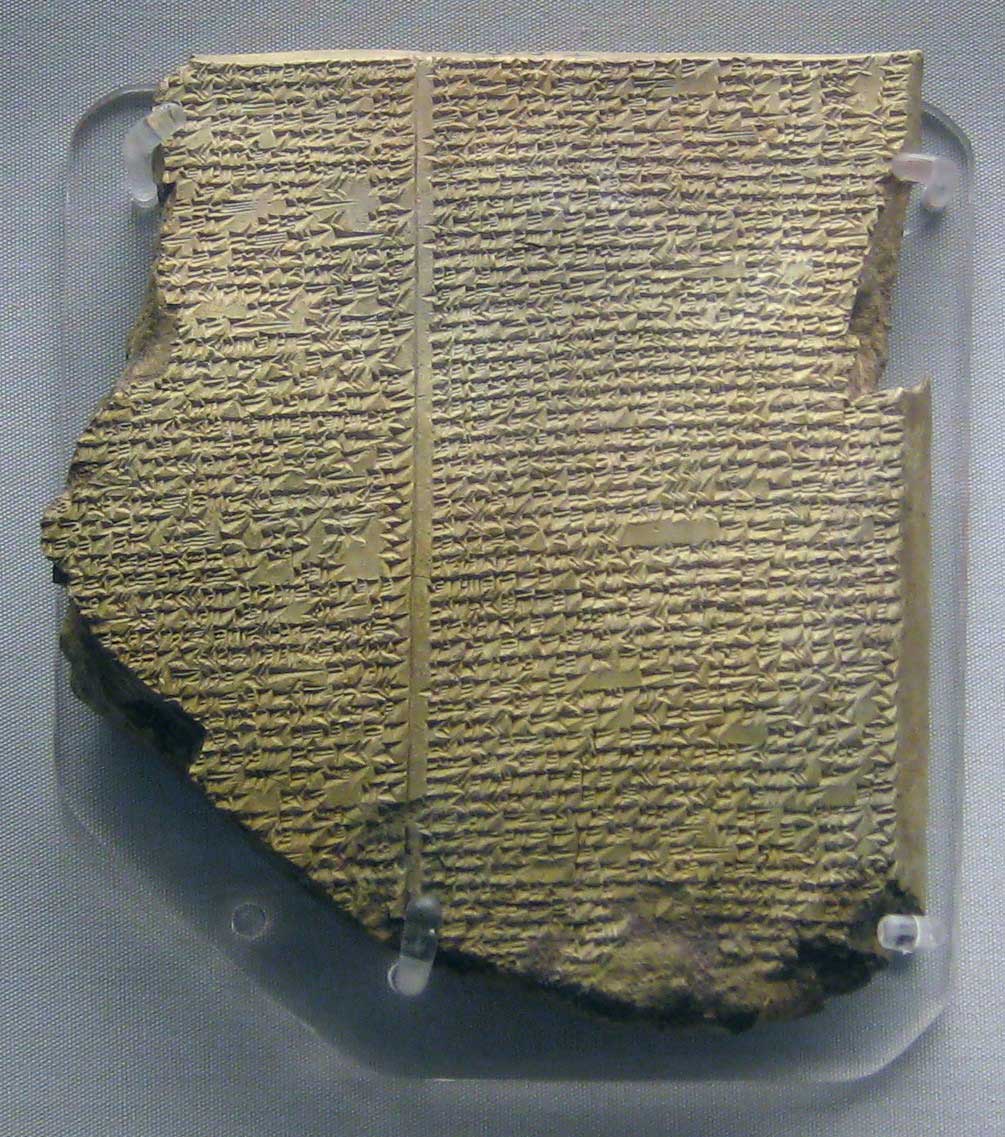
The Epic of Gilgamesh (2100-1200 BC)
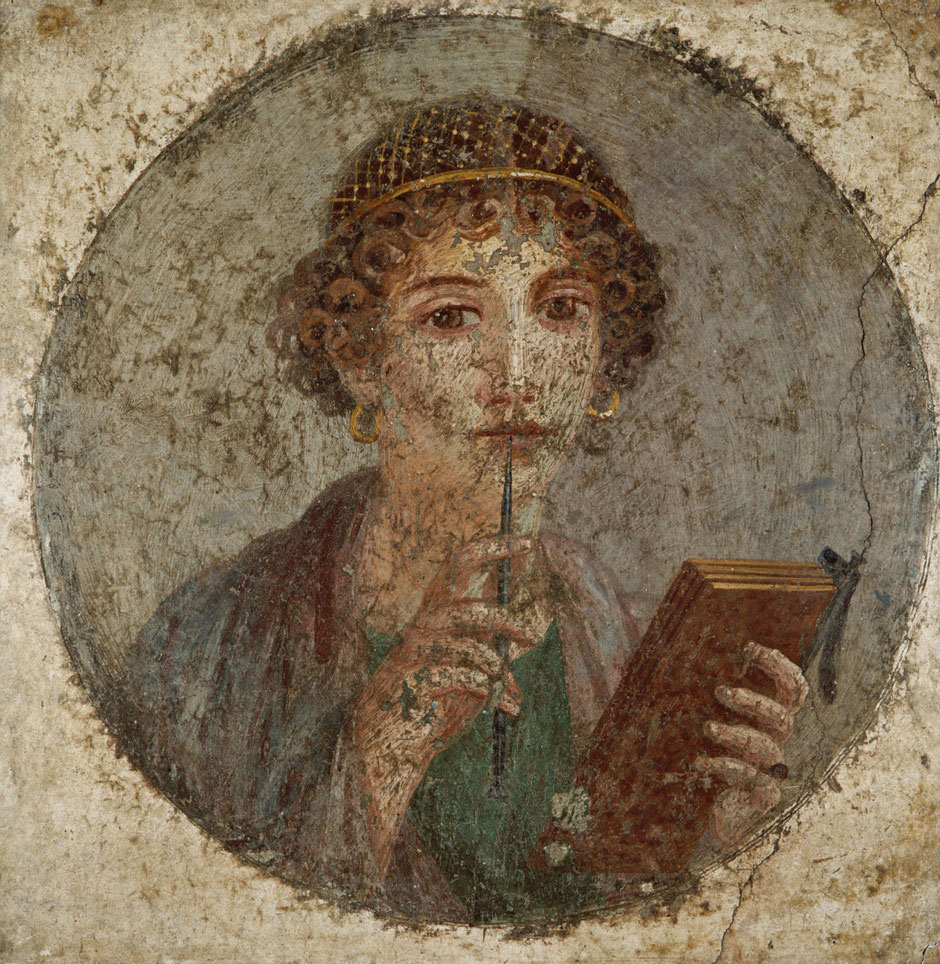
A 1st-century fresco painting from Pompeii, Italy, depicting the poet Sappho holding a stylus.
Ancient Greece and Italy gave us many of our first poet superstars. From Greece, we have Homer with his timeless Iliad and Odyssey. In addition, Sappho, the poetess or 10th muse as Plato called her, whose passionate lyric poetry, poems meant to be sung with a lyre, continues to intrigue and inspire to this day.
Italy granted us Virgil, Ovid, and Catullus and their enduring works, Aeneid, Metamorphoses, and potent elegies on love, respectively. Notably, these ancient poems have inspired artists of every stripe across centuries from the Epic of Gilgamesh onward. From Raphael’s Vatican Fresco Mount Parnassus to John William Waterhouse’s Circe to the modern multi-media exhibit Gilgamesh Contemporary these works show no sign of loosening their grip on the imaginations of artists.
It’s not only ancient poets that propel artists to seize their brushes. For example, different artists have repeatedly illustrated Dante’s Divine Comedy and John Milton’s Paradise Lost. Gustave Doré's rendering of the Commedia became the definitive vision for the work. Likewise, William Blake, John Martin, and again Gustave Doré created masterful watercolors, etchings, and engravings of Paradise Lost that are a visual feast that magnifies the words' potency.
Many additional pieces of exceptional art have been inspired by poetry as evinced by collections such as the Illustrated Rumi, which contain works from Sufi and Islamic artists spanning 600 years. Compilations like these reveal how the march of centuries fails to diminish the capacity of powerful words to incite creative flow.
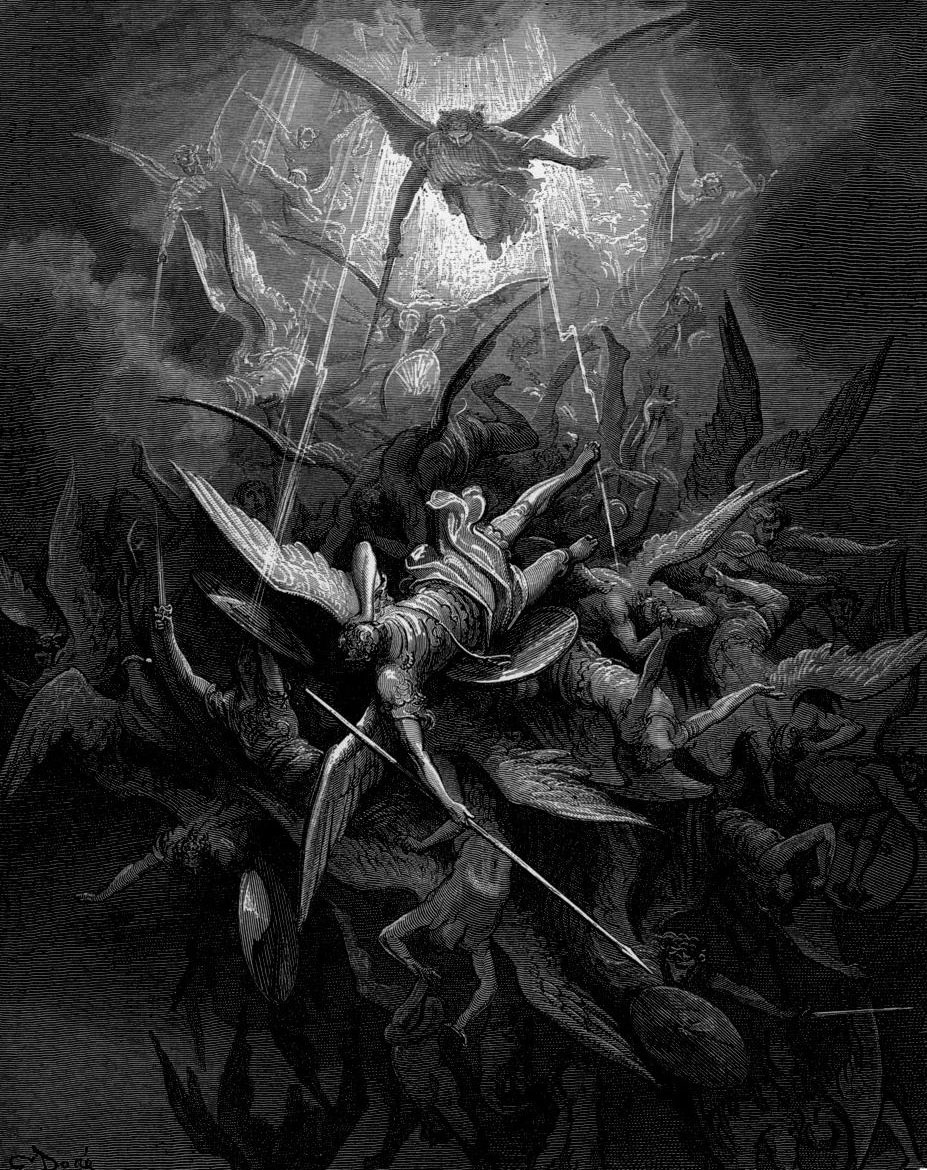
Michael casts out rebel angels. Illustration by Gustave Doré for John Milton's Paradise Lost, 1866
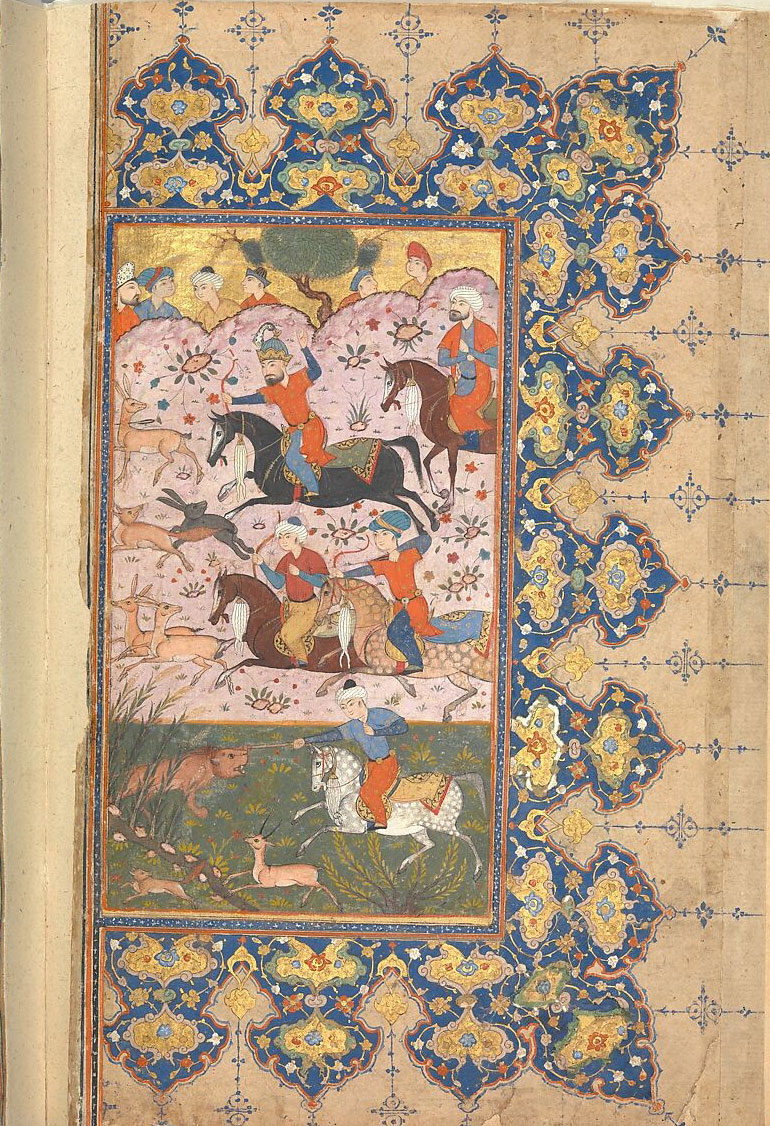
An image from the Illustrated Rumi, 894 A.D
The tradition of artists finding inspiration in poets has a lengthier history, seeing its height in the Victorian era. However, as it fell out of fashion with the end of narrative painting in the 20th century, the tables suddenly turned. As literature and poetry took the backseat, only being referenced obliquely by artists, prominent poets began writing in direct response to specific works of art.
There are many fine examples of this influence at play. Among these is the beautiful and haunting poem by Philip Larkin, “An Arundel Tomb,” written in reaction to seeing medieval stone effigies in Chichester Cathedral. Another striking example is the poem “Musée des Beaux Arts” by W.H. Auden, written in response to the Landscape with the Fall of Icarus by Pieter Bruegel the Elder. Yet another, “The Man with the Blue Guitar” by Wallace Stevens, written as a reflection on “The Old Guitarist” by Pablo Picasso, reveals the author’s tango with incredulity and acceptance of a rapidly changing world.
There are many more, but these show an inkling of the vast potential of visual art to tap into the poet's mind, conjuring words to express the deep feelings summoned forth.
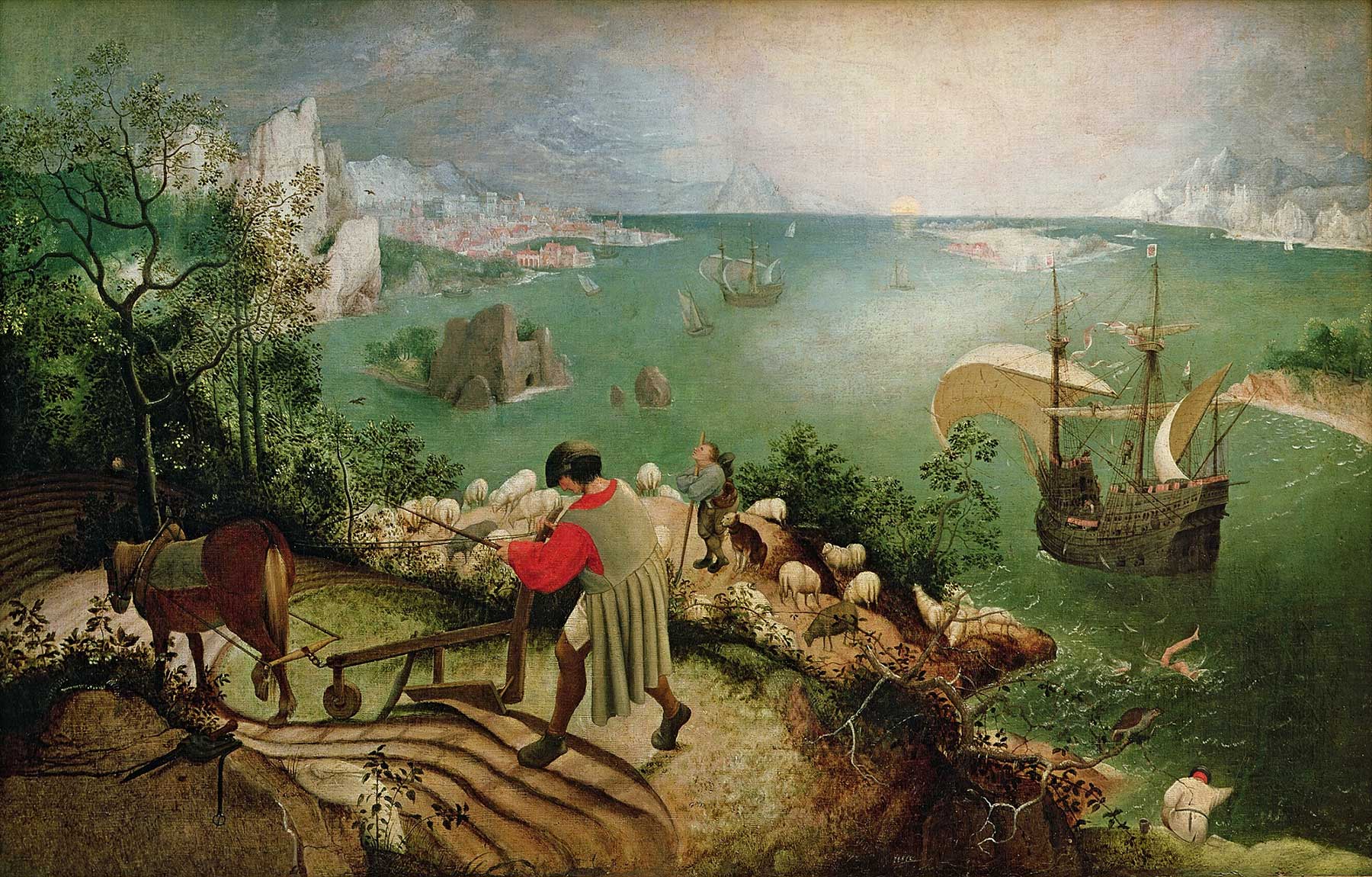
“Landscape with the Fall of Icarus” by Pieter Bruegel, 1558
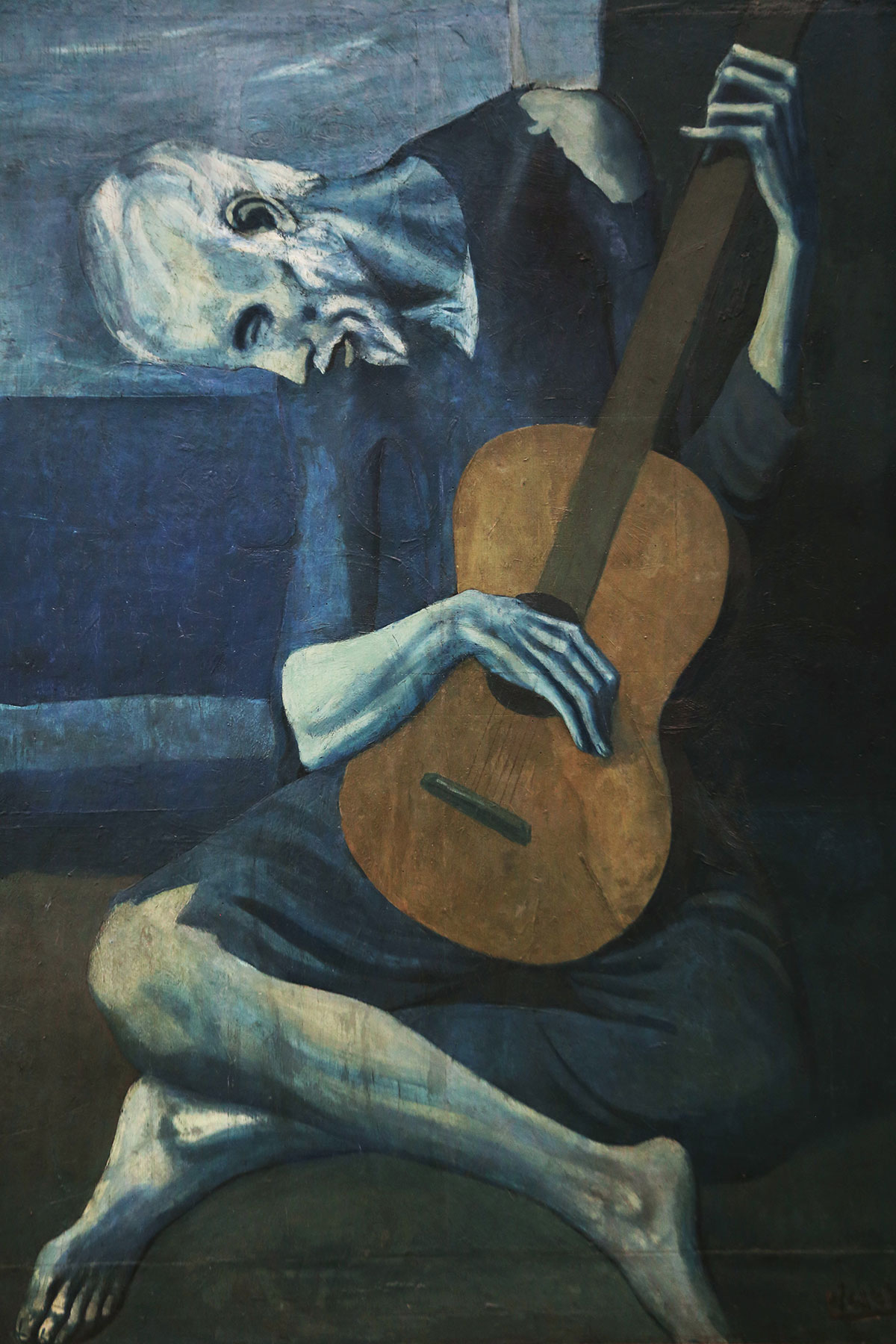
“The Old Guitarist” by Pablo Picasso 1903
When we analyze why artists find words moving or poets find works of art so compelling, the mind can muddy the waters, making it harder to recognize what may be better understood by the heart. Artists are often moved because the words evoke a deep emotion, a recollection from the past, a long-held desire, a sense of exultant triumph or devastating loss.
In this, they feel resonance, resulting in the need to visually reveal the inner stirrings of their soul. Likewise, when viewing an outpouring of mastery on canvas, the poet may find words bubbling from an inner well that quenches a before unrecognized thirst.
Creative works are perceptual acts, taking something from the realm of the five senses and presenting it in the artist’s own words, images, sounds, or forms. The artist hones their attention, extracting profundity from even the most commonplace circumstances. Their eyes are open to wonder, neither shying away from what is dark or brutal nor looking squintingly at the sublime. Artists and poets are, in essence, lovers of beauty; hence, they will always be ideal partners in the dance of creation.
It is often said that beauty is in the eye of the beholder, but what also deserves mention is that the more open you are to seeing it, the more available it becomes to you. One thing that sets artists and poets apart is that their vision is tuned in such a way that wonder is more readily within their grasp. The brilliant Scottish painter William Dyce captures this manner of viewing the world with his impassioned response to his first encounter with the Eternal City, “in truth, to me Rome was a kind of living poem, which the soul read unceasingly, with the soothed sense which poetry inspires.”
In this statement, Dyce reveals his access to awe, a cherished and steadfast friend of any artist. It also reveals his love of poetry. Many of his works show the imprint of this love and his particular appreciation of the poet William Wordsworth. These revelations demonstrate how an artist can cultivate the ability to access beauty by filling their life with it. The use of poetry, our own or that of others, is a lovely avenue we can traverse in this pursuit.
There are many methods for using poetry in our art. We can apply this approach in various ways, mix and match techniques, and tap into play as we progress. The most straightforward starting point is to put on a poet’s glasses. Try looking at the world as if you were about to launch into verse.
A great exercise is to tune into the smallest details, zoom in, and amplify what you see, allowing room for the minute to appear larger than life. Once satisfied, look up, pan out, and take in the overall scene. Let the micro blend into the macro scale and enjoy the process of switching between the two perspectives.
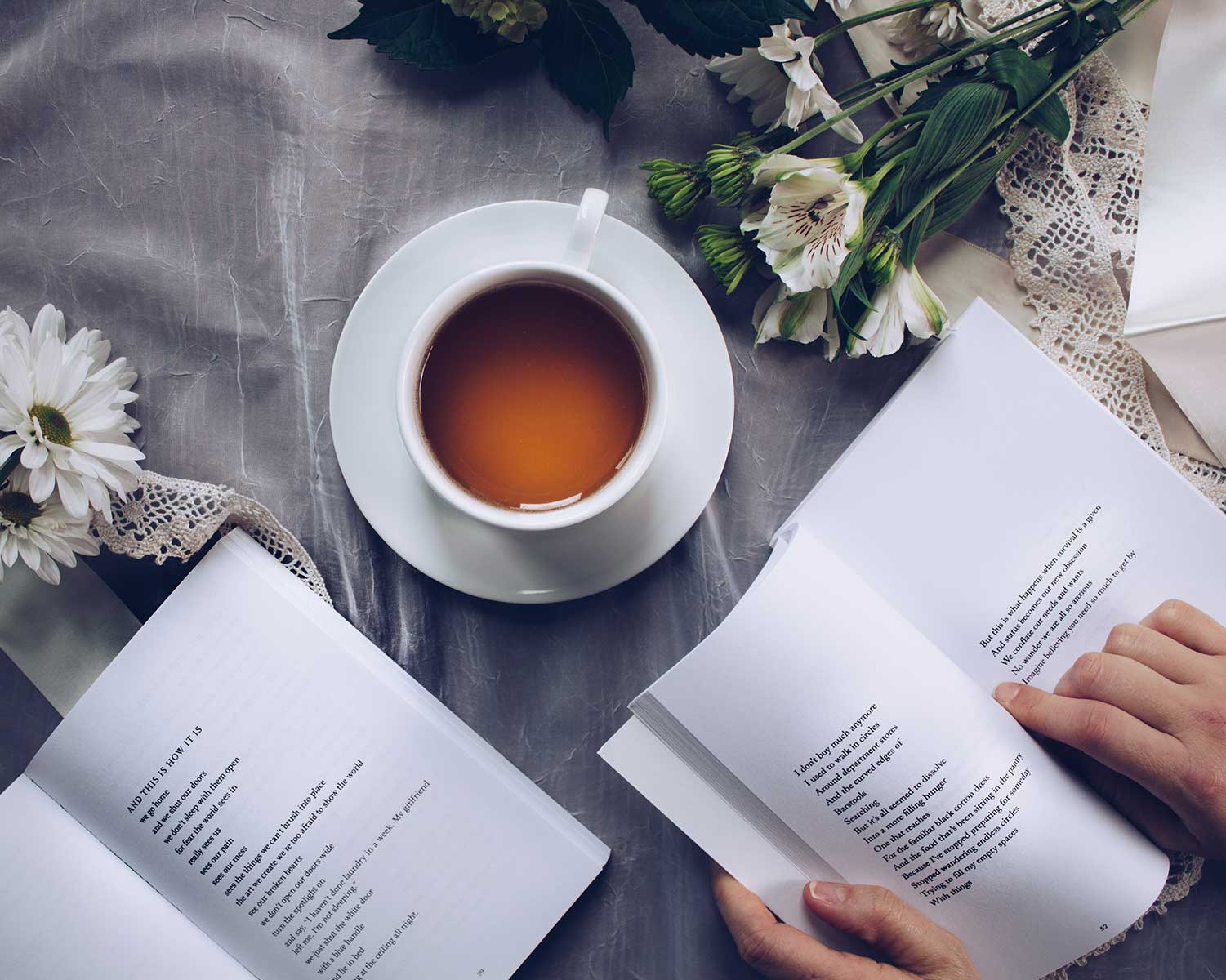
Next, try writing a few lines yourself. Experience the rush of attempting to put an image that has caught your eye into words. Feel the potency of exchanging the visual for the pictorial. Don’t judge; just express whatever comes to mind.
Now, combine the two, drawing pictures to fill in what the words can’t quite grasp and vice versa, enjoying the process of tapping into very different channels of the creative process. This experience should demonstrate a lot. You might find you have a way with words or, contrarily, that it's a good thing you’re drawn to paint rather than write. Either way, it stretches your creative muscles and challenges you to express yourself in new ways.
A different approach is to start with a poem you love and brainstorm images that come to mind. Close your eyes, read the words out loud, and let the pictures pop. Sketch loosely, and let the ideas flow. Fill in and flush out where the inspiration leads you. Try not to overthink it; keep it fun!
To retain a playful atmosphere, revisiting words and images from Dr. Seuss or Shel Silverstein might be helpful. Their combos of verse and illustration may have been designed for children, but each of us has an inner child for which these works will always retain potency.
For more mature material that still embraces simplicity, you might glance through Rupi Kauer’s works, recognizing how vital her drawings are and how much they add to the integrity of her words. Of course, you could also look to William Blake if you want to take on the more profound questions of life and death and ponder how they might translate into your poetry and art.
Regardless of where you seek inspiration, the most important thing is to listen to the stirrings within you and let what galvanizes you take the driver's seat. There is no right or wrong. There is only what moves you.
Life is poetic, and art is everywhere. The trick is to be receptive enough to perceive it. Cultivate this in yourself. Urge it in your friends and family and observe how much more beautiful life becomes.
Our experience is dictated by where we place our attention. If we focus on what is wondrous about life, we experience more wonder benefiting ourselves and those we love. So, if you’re on a creative quest, searching for the beauty in life, and wanting to share it with others, it’s time to infuse your art with poetry. After all, what you decide to see influences what you get. Why not see something spectacular?
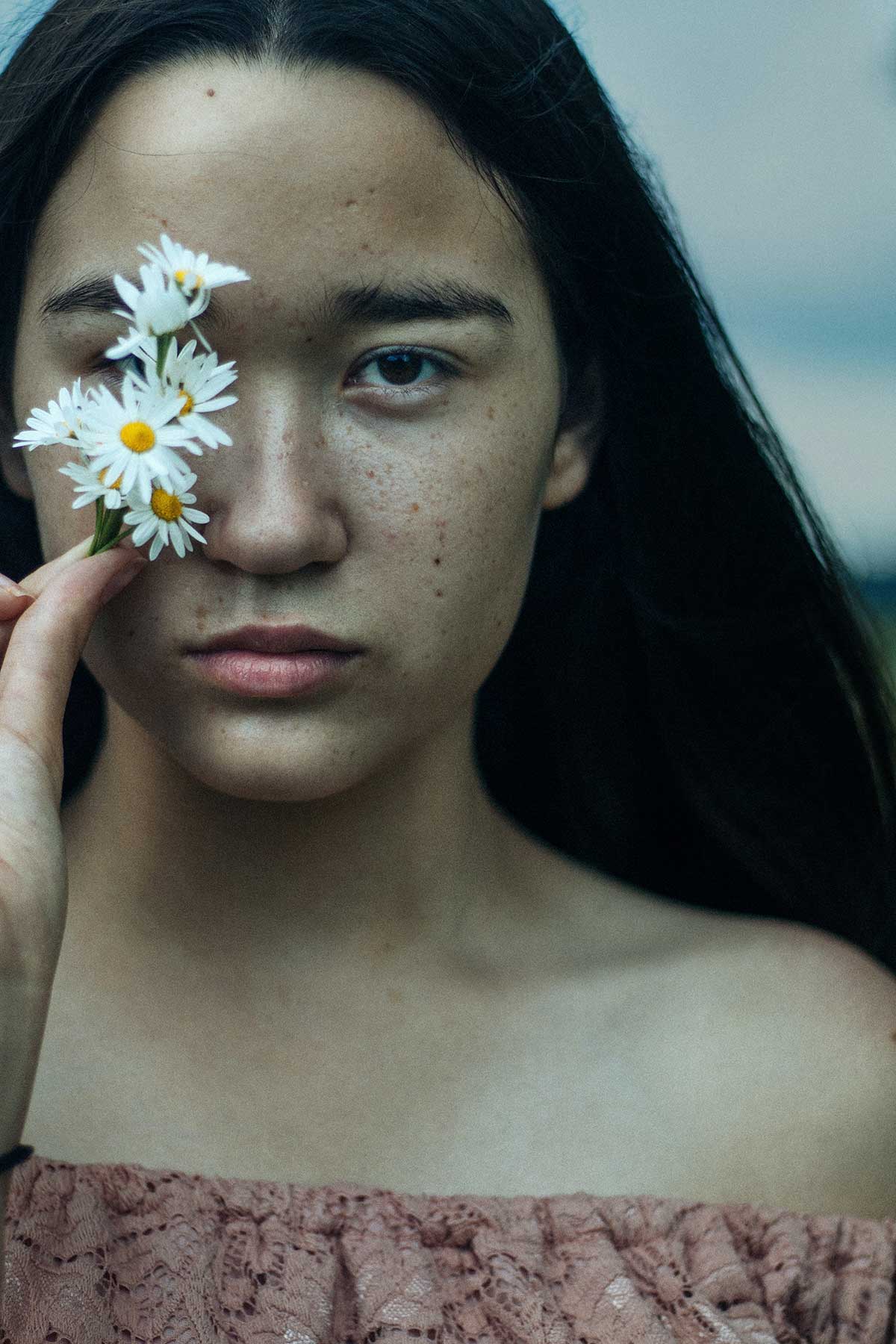
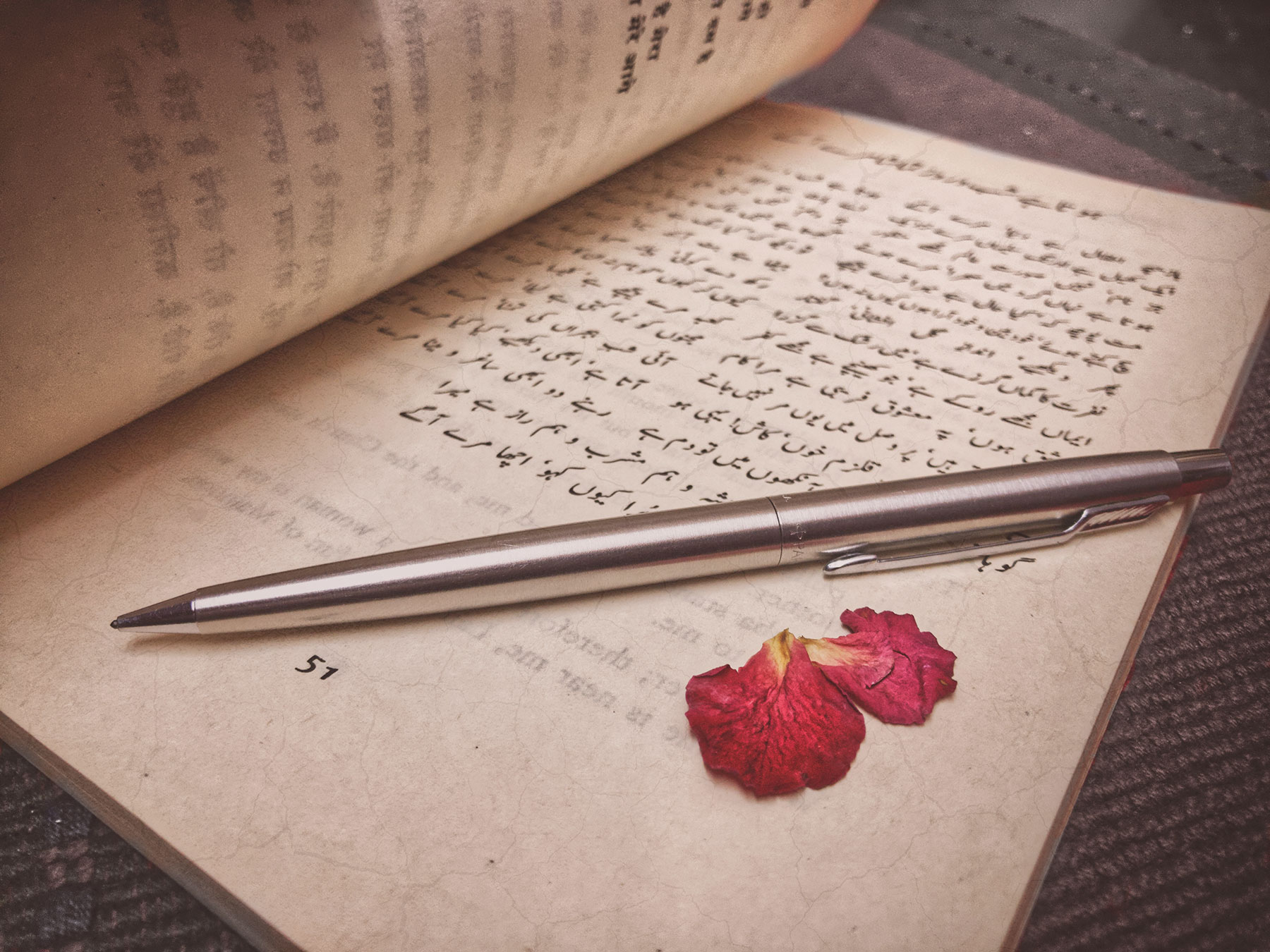
The word "form" holds significant relevance to both artists and poets, as it encompasses the fundamental structure and shape that defines their creative expressions. For artists, "form" refers to the physical or visual appearance of their artwork. It encompasses elements such as composition, perspective, color, and texture, which contribute to the overall visual structure and aesthetic appeal of the artwork. The form of a painting, sculpture, or any other visual art piece is essential in conveying the artist's intended message or concept, and it serves as a foundational aspect of artistic expression.
Similarly, for poets, "form" pertains to the structure and arrangement of words, lines, and stanzas within a poem. It encompasses poetic elements such as rhyme, meter, and verse, which contribute to the rhythm, flow, and musicality of the poem. The form of a poem is a deliberate choice made by the poet to convey their thoughts, emotions, and ideas in a specific manner, and it plays a crucial role in shaping the poem's meaning and impact on the reader.
In both art and poetry, the concept of "form" is essential, as it provides the framework upon which the creative expression is built. It serves as a vessel through which the artist or poet can convey their vision and communicate their ideas to the audience. The form of an artwork or a poem can evoke emotions, create meaning, and establish a unique identity for the creative work, making it a pivotal aspect of artistic and poetic endeavors alike.
"Wild Geese" is a poignant poem that encourages a deep connection with nature and a recognition of our place within the larger web of existence. Mary Oliver's rich imagery and evocative language invite the reader to embrace the wildness and beauty of the natural world, and to find solace, wisdom, and a sense of belonging in its vastness. It is a poem that inspires artists to appreciate the beauty of nature and seek inspiration from its timeless wisdom.
Get those journals and sketchbooks out and get ready to do some self-reflection and writing. Try not to judge what comes out of these writing sessions. Don’t worry about punctuation or grammar or any of that. You can even just make lists if that suits you better.
Take a moment to get quiet. Still yourself by doing some gentle breath work. Light a candle. Now ask yourself some questions to reflect upon -
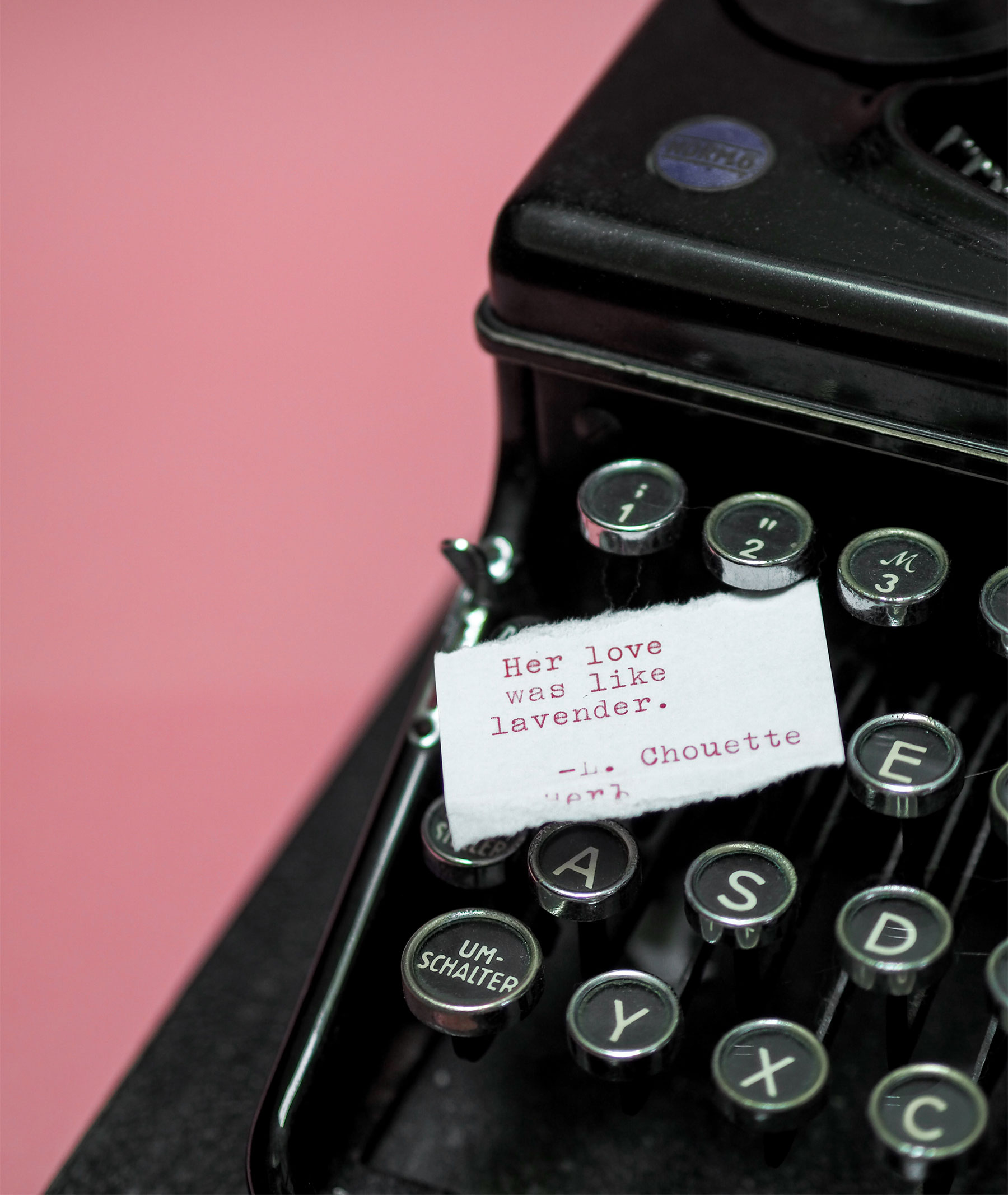
I am sharing this beautiful Meditation from one of my favorite meditation masters - Rachel Hillary. Surely, if we are to steep in all the goodness that poetry has to offer our creativity, then we must ignite the heart. This journey will help you do just that! Give yourself some quiet time to enjoy this beautiful meditation.
Rachel will share a little about this experience -
This meditation experience is designed to envelop you in the warmth of your own heart, to return you to this source of safety and knowledge and peace within yourself. An internal resource you can utilise again and again, and allow to resonate within you and so in your world. The process is very simple yet very powerful, and each time you return to this experience your connection with your own heart, and your own unfolding will grow and expand. The music is by Chris Collins of Indie Music Box.
lots of love,
Rachel
Each month we will have a positive affirmation. I recommend you print out this affirmation and put it in your sketchbook or somewhere in your studio. Recite the affirmation out loud each time you show up to create. Saying words aloud is powerful and can begin to re-write some of our own limiting beliefs or calm our fears. Try it now…
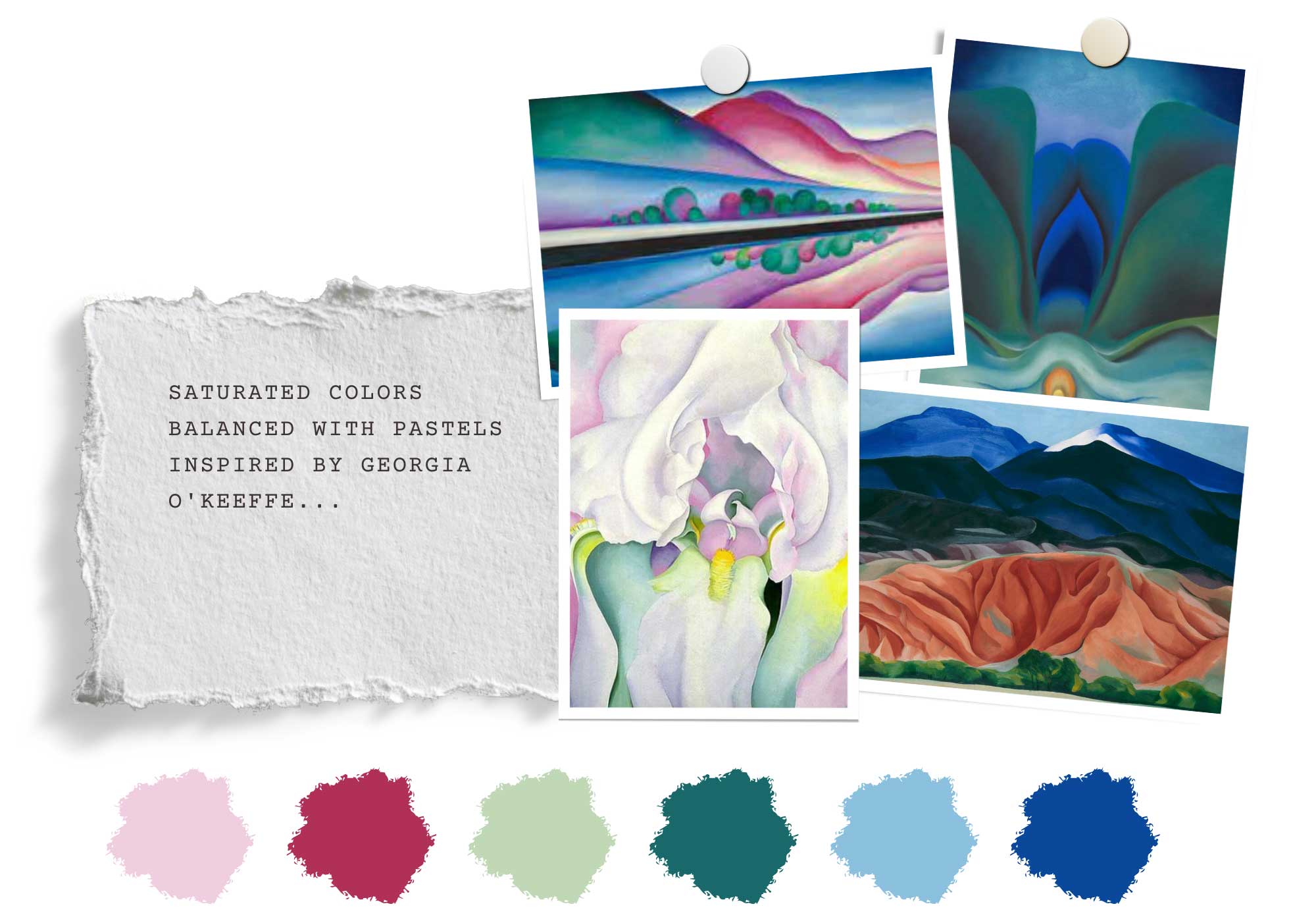
This month we are going to explore the stunning hues so often used by our monthly Master Artist, Georgia O’Keeffe. Her use of colors can be described as romantic, with a sensuous and expressive quality that captures the essence of her subjects.
O'Keeffe's color palette is characterized by a harmonious blend of bold, saturated hues and subtle, muted tones. Her paintings often feature a range of warm and cool colors that create a striking contrast, adding depth and dimension to her compositions. Her use of colors is often symbolic, with each hue carefully chosen to convey emotions, moods, and the essence of her subject matter.
In her floral paintings, O'Keeffe often employs a rich and varied color palette that includes deep reds, vibrant oranges, lush purples, and intense pinks. These colors are often juxtaposed with soft, muted greens and subtle grays, creating a captivating contrast that adds drama and intensity to her floral compositions. Her landscapes are often characterized by a similar range of colors, with earthy browns, warm yellows, and vibrant blues creating a sense of depth and expansiveness.
O'Keeffe's color palette is often described as sensuous and expressive, with a romantic quality that infuses her paintings with a sense of emotional depth and intimacy. Her use of colors is bold yet nuanced, capturing the essence of her subjects and inviting the viewer to experience the beauty and complexity of the natural world through her unique artistic lens.
Although, O’Keeffe employed almost every color of the rainbow we will be focusing on her use of saturated color paired with soft pastels. This coupling creates vibrancy and energy but also softness and sensuality. Look for this balance in her work.
Many of us know and love the works of Georgia O’Keeffe but did you know that she was greatly influenced by poetry? Yes, she sure was and I think you will find the connection insightful and inspiring, while giving deeper meaning to her paintings. Many of her creations are intimately connected to the divine energy of the natural world. So, let’s learn more about this amazing artist…
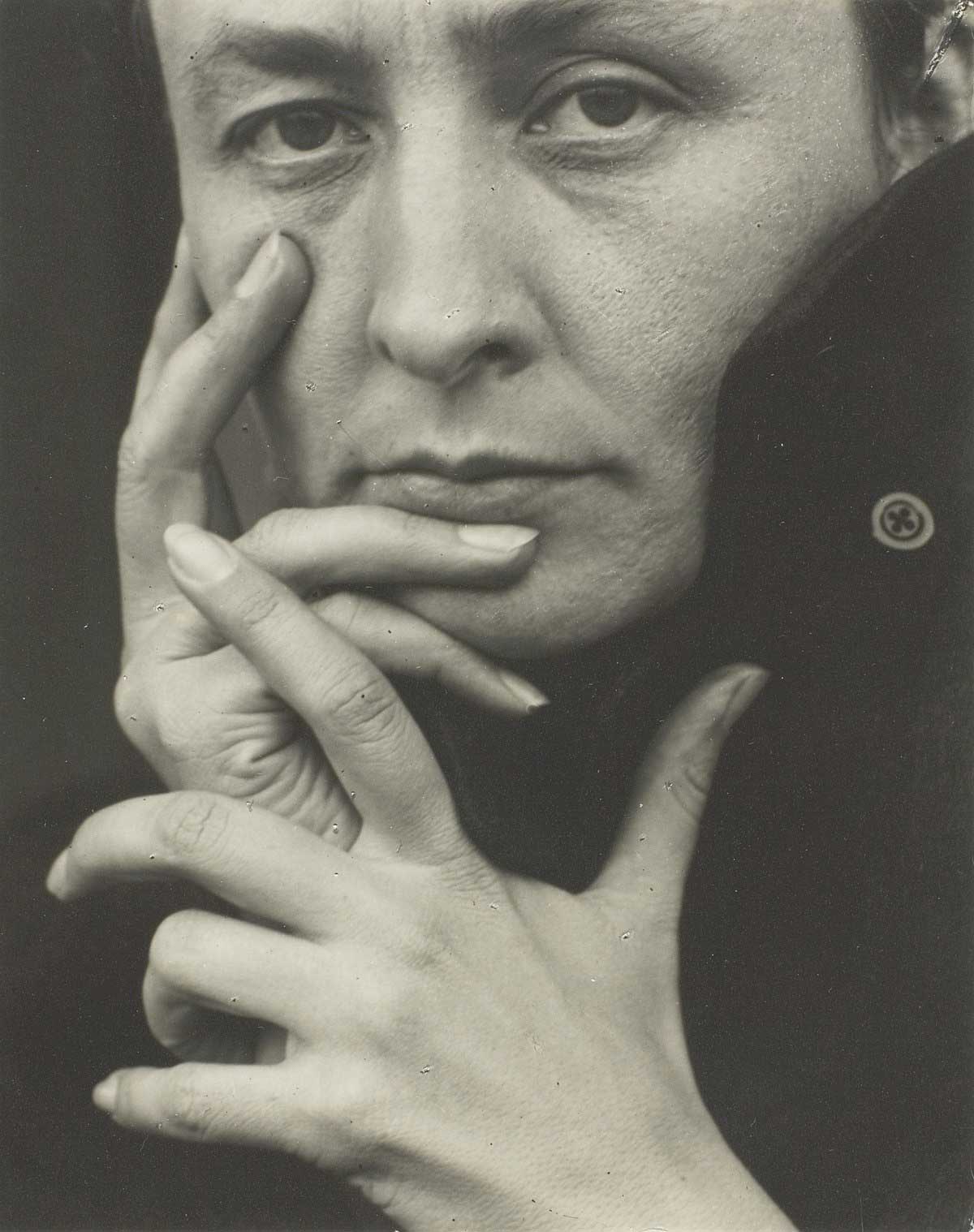
Georgia O'Keeffe was born on November 15, 1887, in Sun Prairie, Wisconsin, USA. She showed an early interest in art and received formal art training at the Art Institute of Chicago and the Art Students League in New York City. O'Keeffe initially pursued a traditional style of painting, but she soon began to experiment with abstraction and develop her own unique artistic voice.
In the 1920s, O'Keeffe gained recognition for her innovative flower paintings, which featured close-up, abstracted depictions of flowers, such as irises and calla lilies. Her bold use of color, sensual forms, and abstracted compositions captivated audiences and made her a prominent figure in the American modernist art movement.
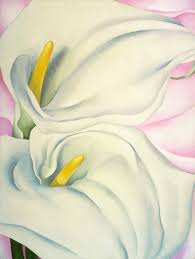
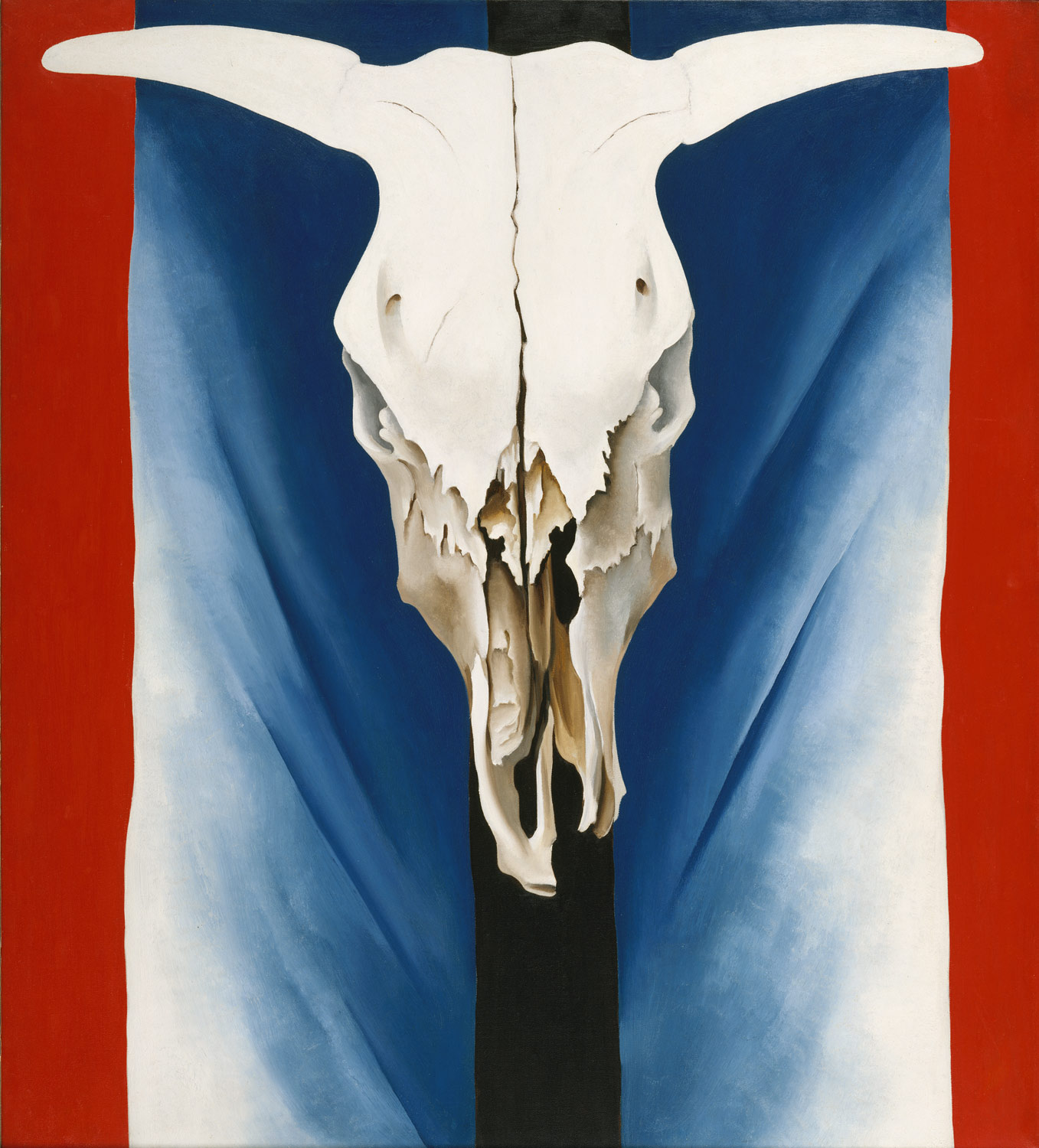
In addition to her flower paintings, O'Keeffe also painted landscapes, particularly inspired by the deserts of the American Southwest. She often spent summers in New Mexico, where she found inspiration in the desert landscape's unique colors, light, and forms. Her landscape paintings, characterized by her distinctive use of color and abstraction, further solidified her reputation as a groundbreaking artist.
In the 1940s, O'Keeffe moved permanently to New Mexico, where she continued to paint and draw inspiration from the landscape around her. Her work during this period included not only landscapes but also abstracted interpretations of bones, shells, and other natural forms. She continued to exhibit her works nationally and internationally and received numerous accolades for her contributions to American art.
Throughout her career, O'Keeffe's artwork broke new ground and challenged traditional notions of art and representation. Her innovative use of color, abstraction, and unique perspective on the natural world set her apart as one of the most influential and pioneering artists of her time. In addition to her artistic achievements, O'Keeffe also faced personal challenges, including health issues and the loss of her husband, the prominent photographer Alfred Stieglitz, in 1946. Despite these difficulties, she continued to create art and remained dedicated to her artistic vision until her death on March 6, 1986, in Santa Fe, New Mexico, at the age of 98. Her contributions to the art world and her pioneering spirit continue to be celebrated and remembered as part of her enduring legacy as an artist.
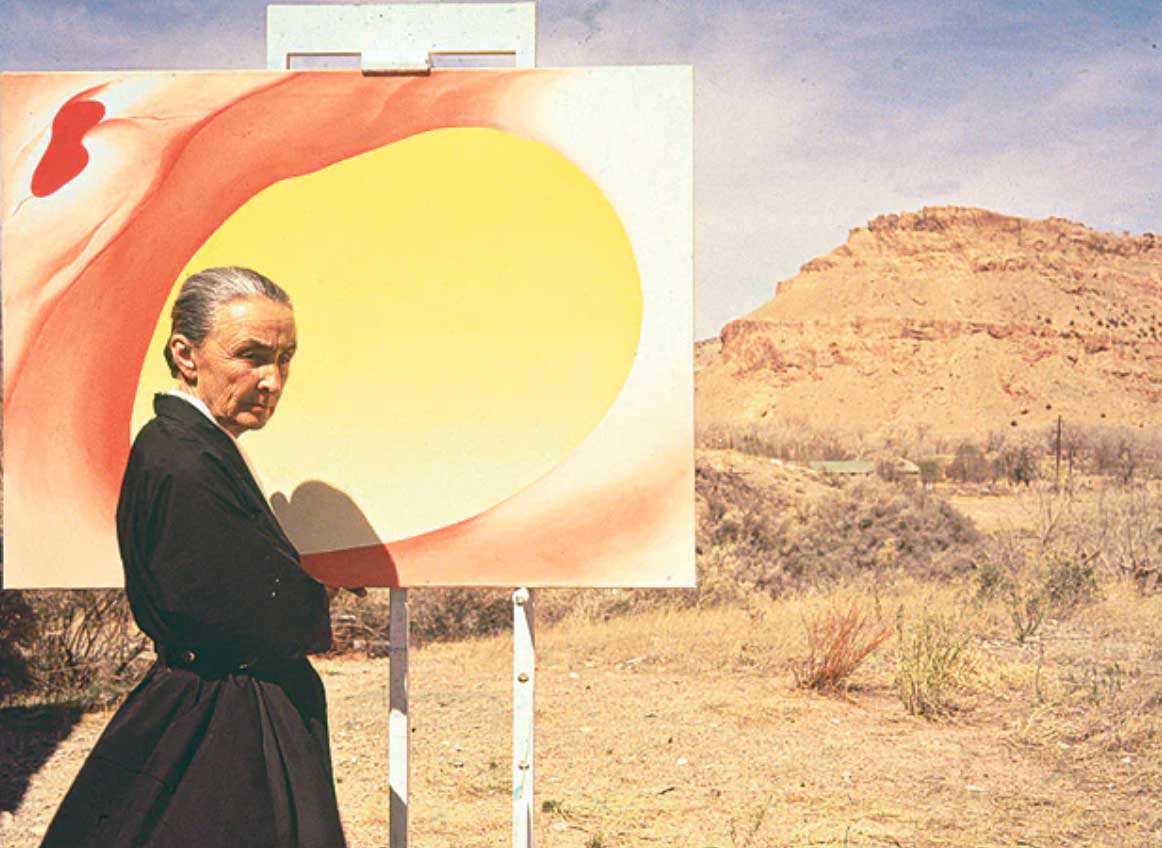
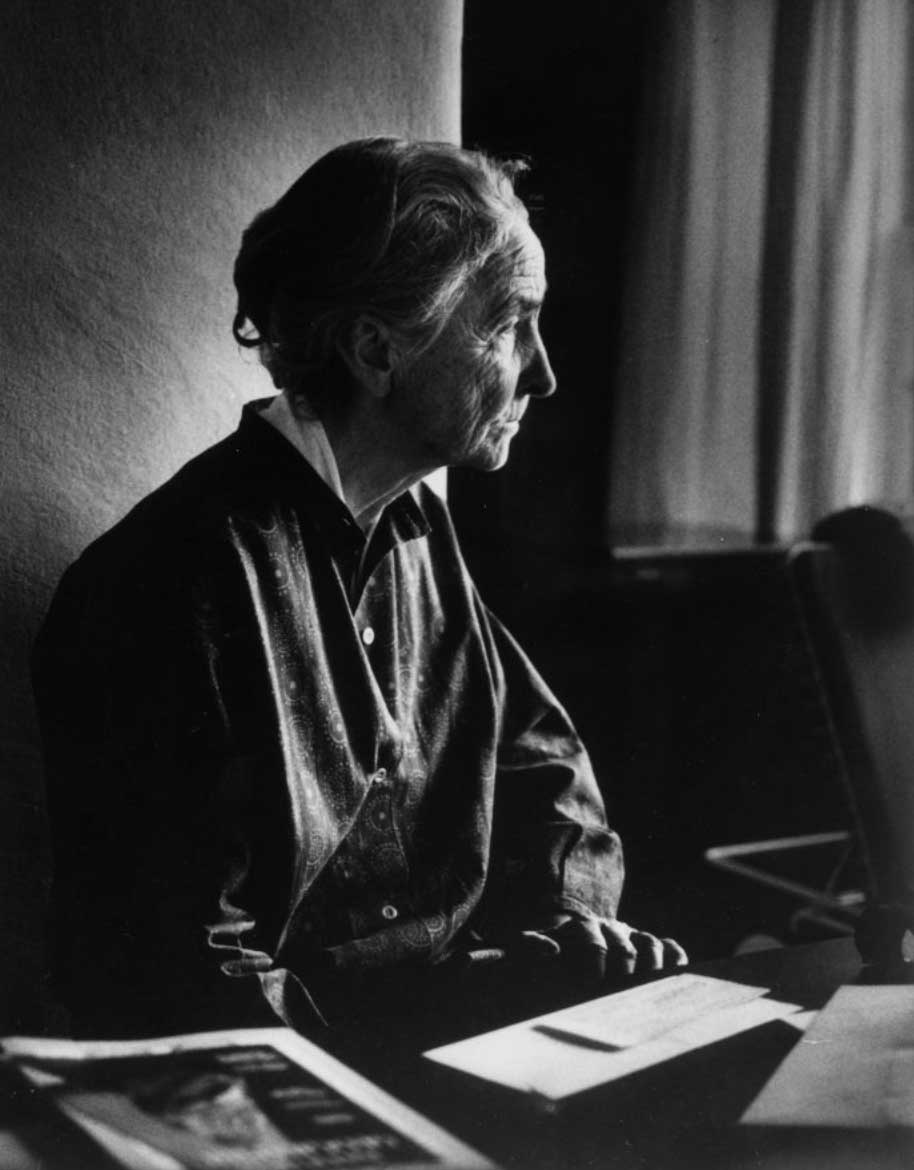
Georgia O'Keeffe's artistic career was deeply influenced by poetry, particularly the works of Arthur Dove and William Carlos Williams. She drew inspiration from the expressive language, imagery, and emotional depth of poetry, and often sought to capture its essence in her artwork.
O'Keeffe was particularly drawn to the poetry of Arthur Dove, an American modernist painter and poet, known for his abstract and symbolic works. Dove's poetry often explored the themes of nature, spirituality, and the inner emotional landscape, which resonated deeply with O'Keeffe's artistic vision. She found inspiration in Dove's use of vivid and suggestive language, which she translated into her own visual language of abstraction and symbolism in her paintings.
O'Keeffe was also influenced by the poetry of William Carlos Williams, a prominent American modernist poet known for his vivid and imagistic style. Williams' poetry often celebrated the beauty of the ordinary and the sensual experiences of everyday life, which resonated with O'Keeffe's artistic approach of finding beauty in the simple and the natural. She found inspiration in Williams' use of precise and evocative language, which she sought to translate into her own visual language of color, form, and composition in her artwork.
Throughout her career, O'Keeffe's engagement with poetry was evident in her artistic process and the themes she explored in her paintings. She often cited the influence of poetry on her work, and her deep appreciation for the power of words and images to evoke emotions and create meaning is evident in her iconic paintings that continue to inspire artists and art enthusiasts alike.
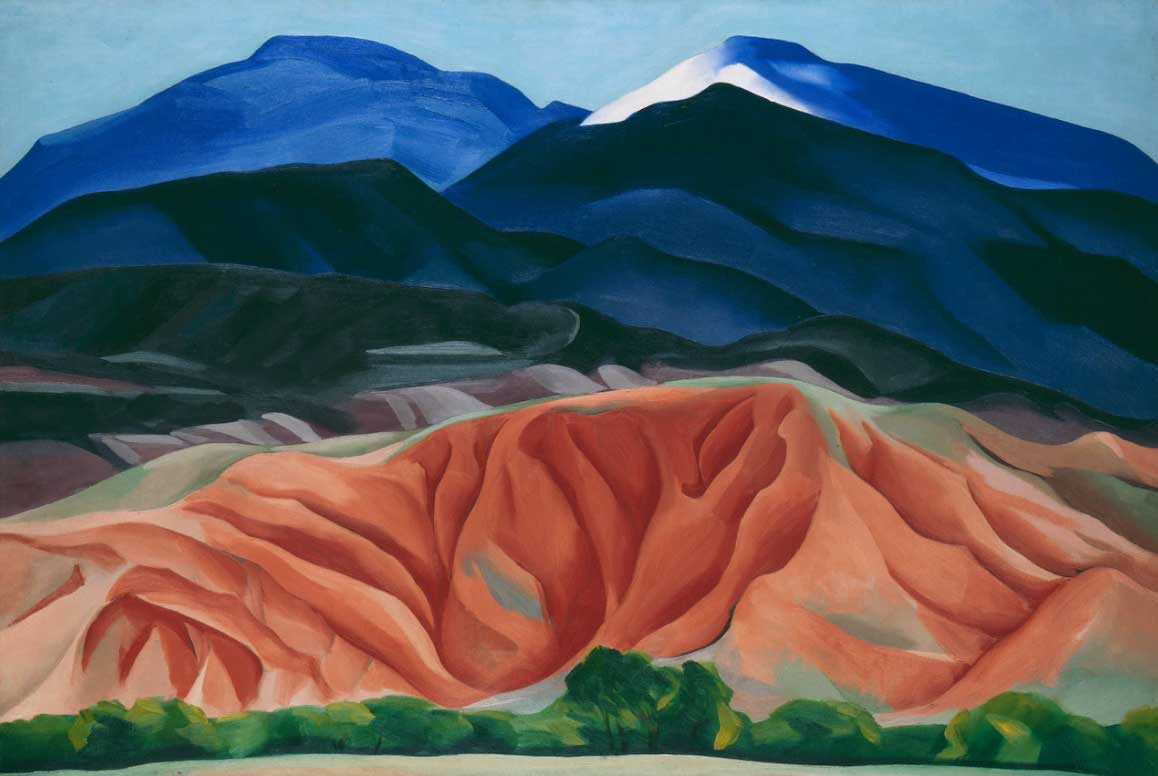
I love this poem by Arthur Dove and you can easily see how Georgia would have seen the genius in these words and the sublime connection to her own vision of the world.
She is estimated to have created over 2000 paintings, spanning various styles and subjects, including her iconic flower paintings, landscapes, abstracts, and still lifes. Here are a few that stand out as key creations in her oeuvre.
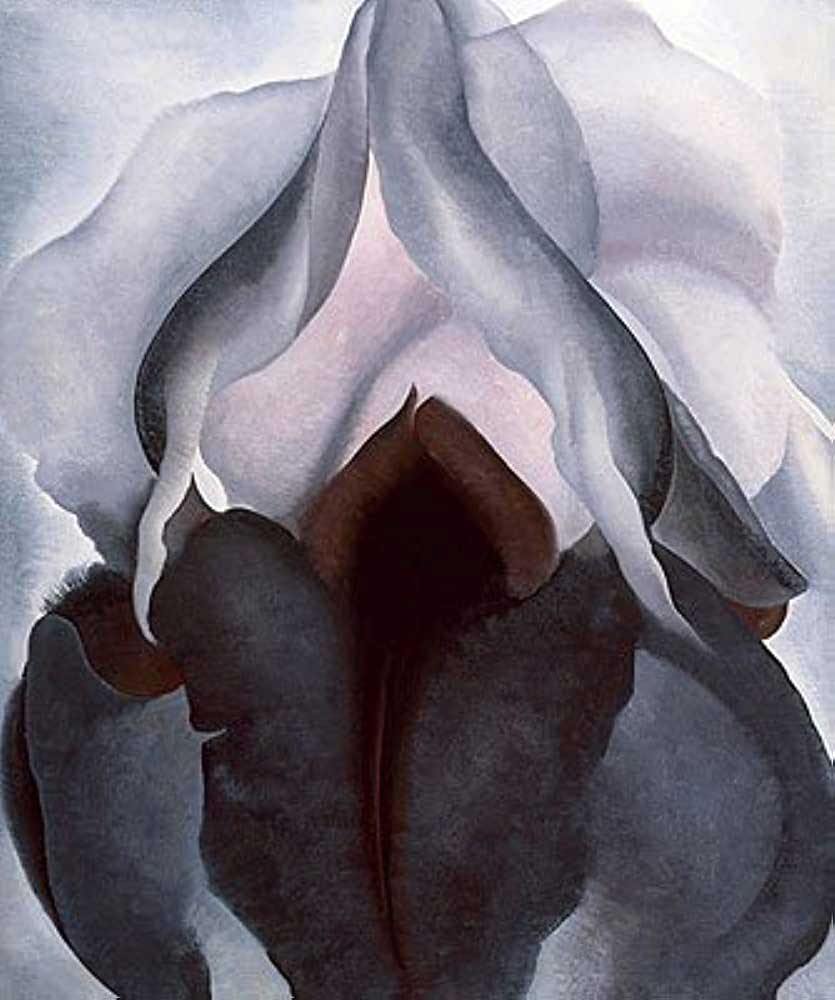
This painting is considered one of O'Keeffe's most famous works and is often interpreted as a representation of her unique approach to form, color, and abstraction. It has been recognized for its sensual and symbolic qualities, capturing the beauty and mystery of the iris flower.
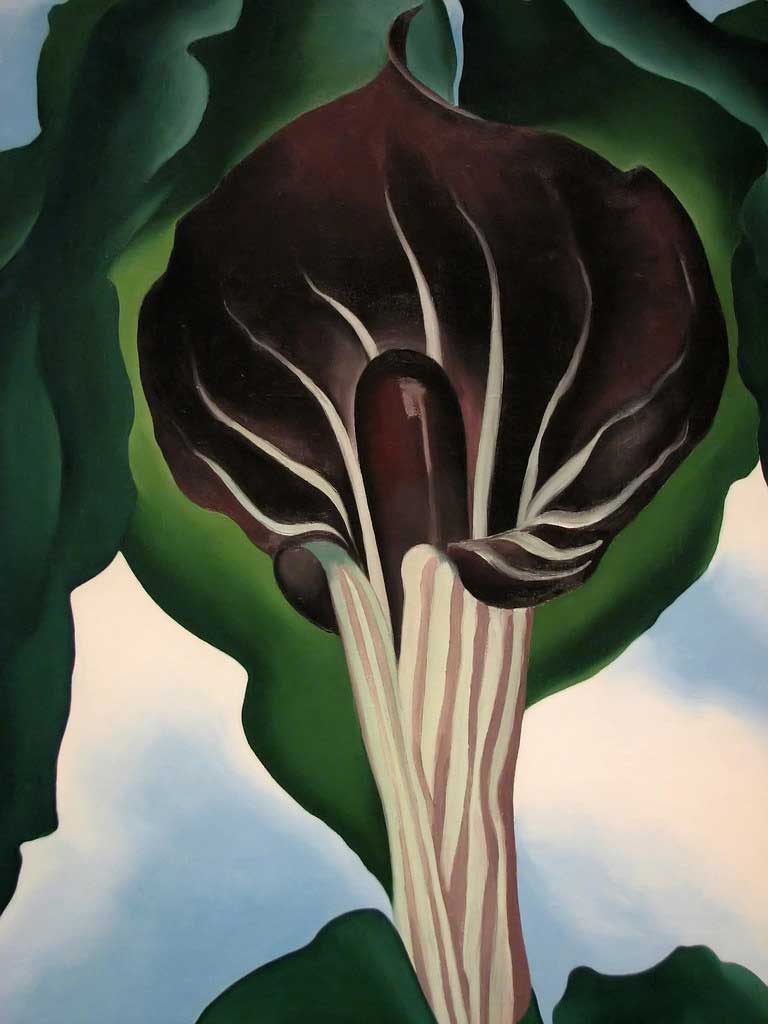
O'Keeffe's series of paintings depicting the Jack-in-the-Pulpit flower showcases her skillful use of bold, simplified forms and rich colors to capture the essence of the natural world. These works are often seen as iconic examples of her ability to transform ordinary objects into abstract and poetic representations.
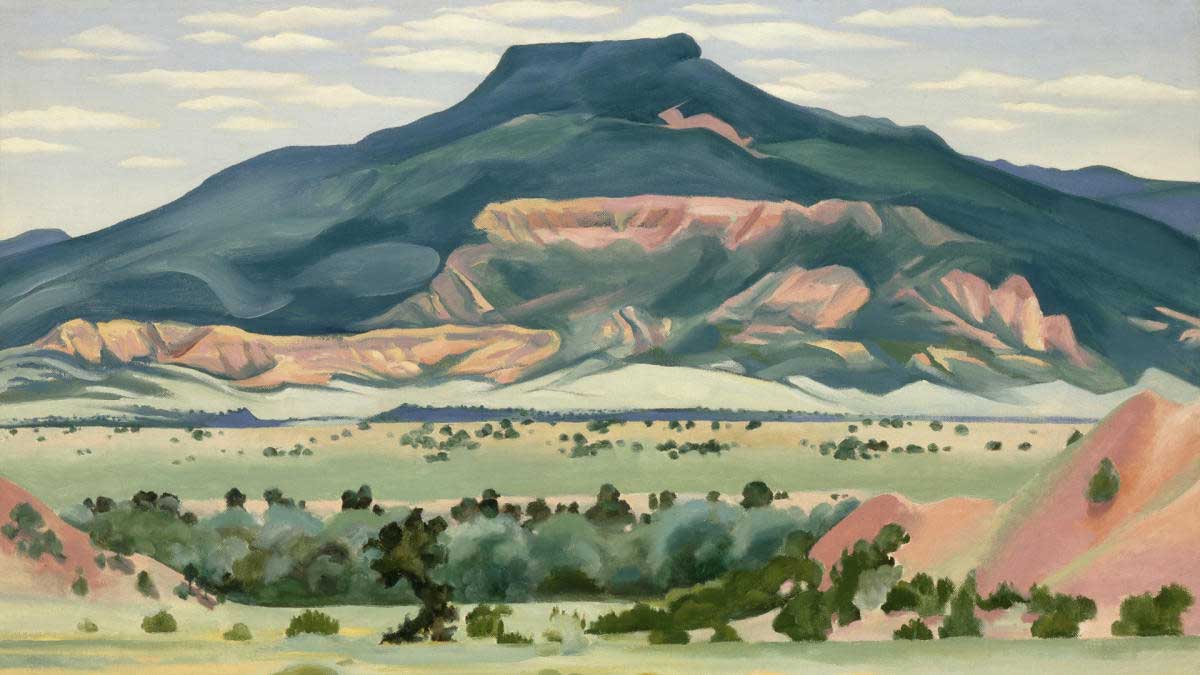
This painting depicts the distinctive flat-topped mountain in New Mexico that O'Keeffe was drawn to and painted repeatedly throughout her career. "Pedernal" is considered one of her most powerful and evocative landscapes, capturing the stark beauty and spiritual essence of the Southwestern landscape.
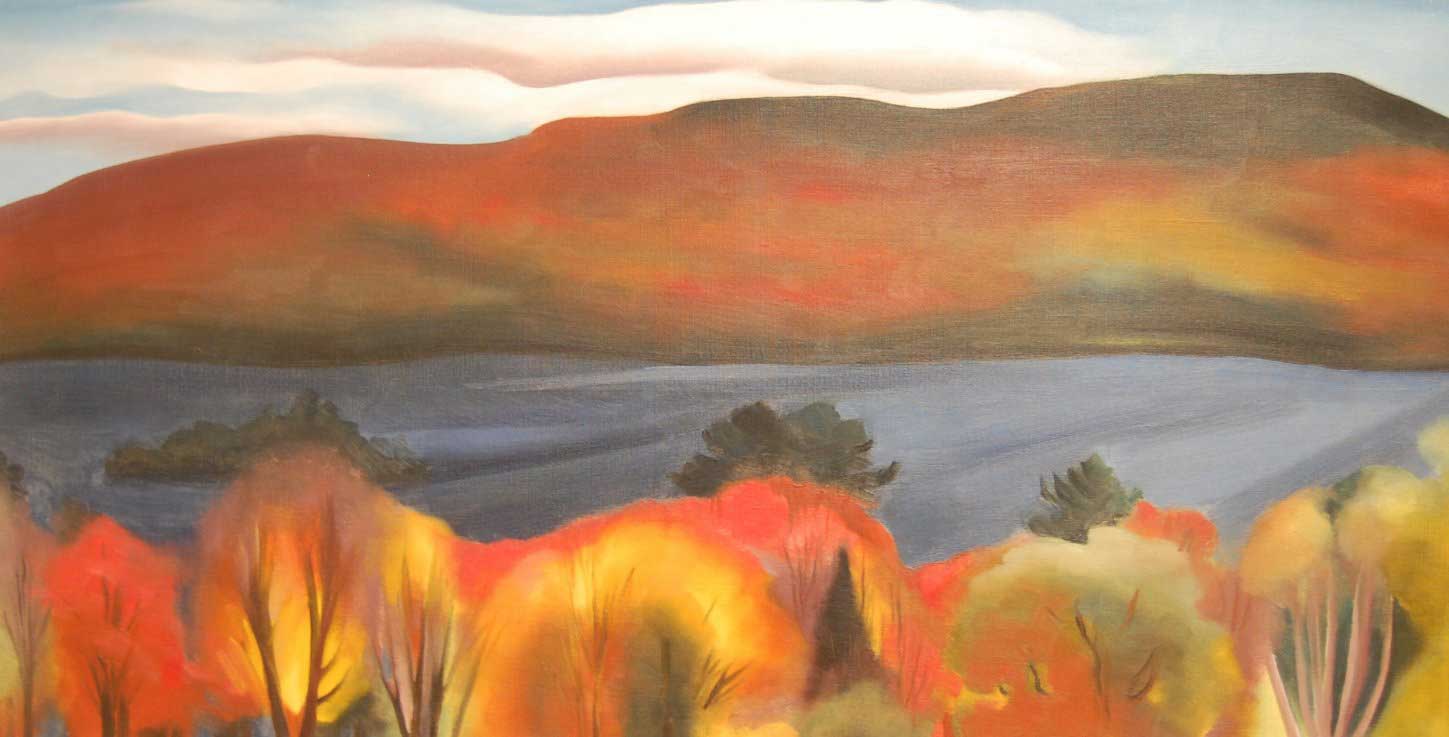
This painting showcases O'Keeffe's unique approach to depicting the changing seasons and landscapes of the American East Coast, where she spent a significant portion of her artistic career. It is notable for its bold colors and abstracted forms, reflecting her modernist style and artistic vision.
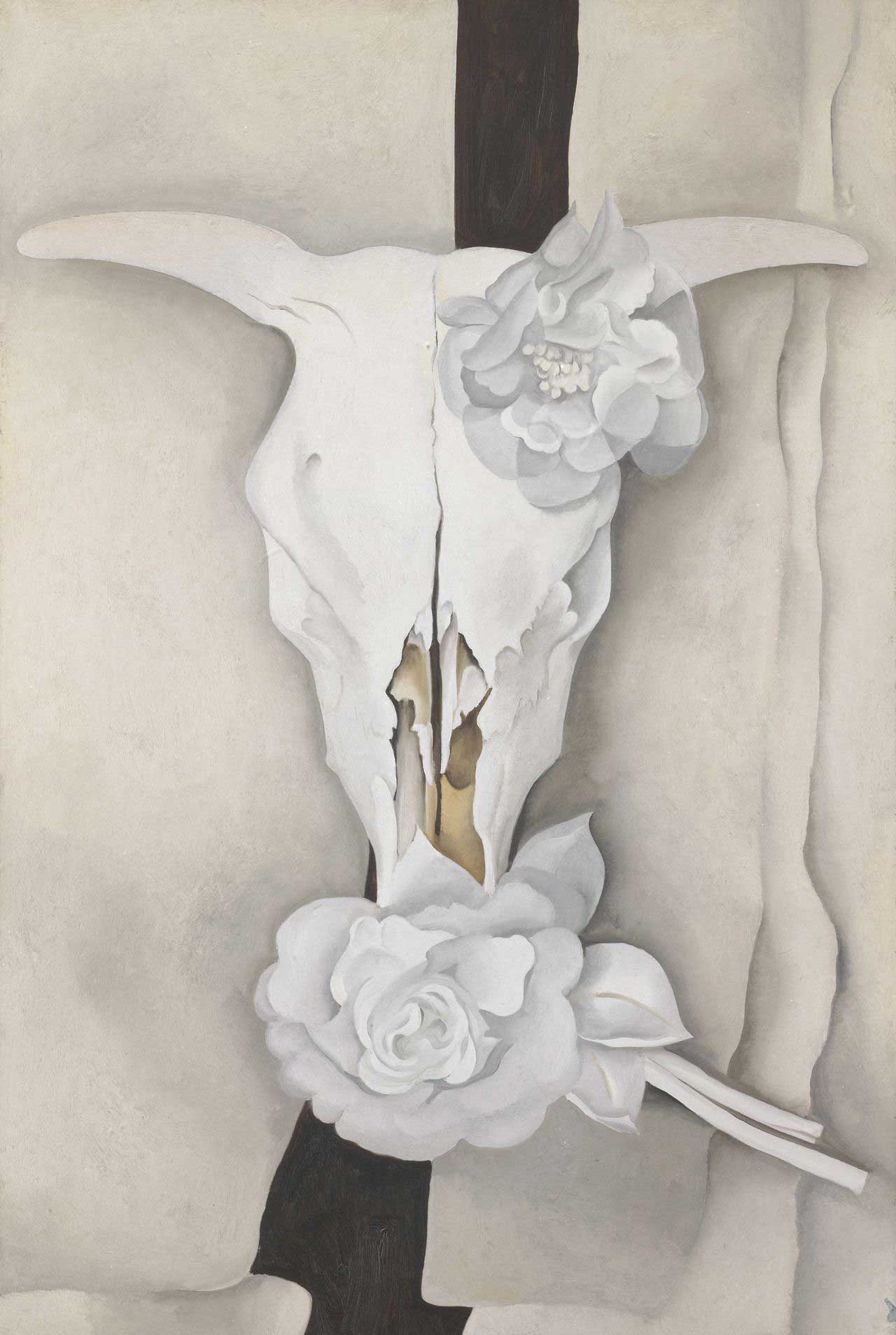
This iconic painting exemplifies O'Keeffe's fascination with the American Southwest and its natural and cultural elements. The combination of the cow's skull and vibrant calico roses creates a powerful juxtaposition of life and death, beauty and decay, and is considered one of her most enduring and memorable works.
Georgia O'Keeffe employed various painting techniques throughout her artistic career, which evolved over time as she experimented with different approaches to form, color, and abstraction. Some of the painting techniques used by O'Keeffe include:
I absolutely adore hearing Geogia talk about her art and her life as an artist, don’t miss these.
I like to find short quotes or poems and write them in calligraphy and illustrate them. - Elisabeth B.
I am the opposite. My art-making inspires my poetry. - Susan M.
Sometimes I’m inspired by a song lyric, but my art inspires poetry! - Leanne S.
Sometimes I take a poem or lyrics from a song for inspiration. - Charlotte B.
As an artist, poetry serves as a source of inspiration that allows me to tap into my emotions and connect with my innermost thoughts. - Katie P.
After I finish a painting, I search through poetry books or saying online, for inspiration to title my work. I love getting lost in the poetry. I have vintage books from many poets I love to pour through. - Annette C.
I belong to a weekly art circle and leave time to write a Haiku inspired by my image. Sometimes I add the words to the image. Also do this with some of the StudioWorks classes. - Mary V.
Yes, yes, poetry and painting definitely inspire one the other. I wrote a sonnet about the polar bear and synchronistically was working on a painting of the polar bear. I wrote the poem onto the painting as part of the design and texture of the piece. - Christine O.
Poetry touches our emotions, stimulates the imagination, and awakens our creativity . We can express ourselves more freely once poetry has put us in a relaxed state of mind. Poetry is a gift to the author as well as the reader, just as art and music, they enriches our lives. - Barbara H.
Reading and writing poetry helps me to explore themes and concepts that I want to convey in my art, and often provides me with inspiration for new pieces. - Vivian L.
Poetry enriches my artistic practice and encourages me to continue exploring new ways of expressing myself through my art. - Bethany D.
Choose a page from an old book or newspaper. Make sure it has plenty of text on it. Look for words or phrases that stand out to you. These could be words that have personal significance or just interesting or evocative language. Using a black marker or pen, or even paint, blackout or cover up all the other words on the page except for the ones you have chosen. The remaining words and phrases should create a new poem or piece of writing. You can use the words as they appear or rearrange them to create a new order or meaning. Consider adding artwork or illustrations to your blackout poetry to further enhance the message or mood of the poem.
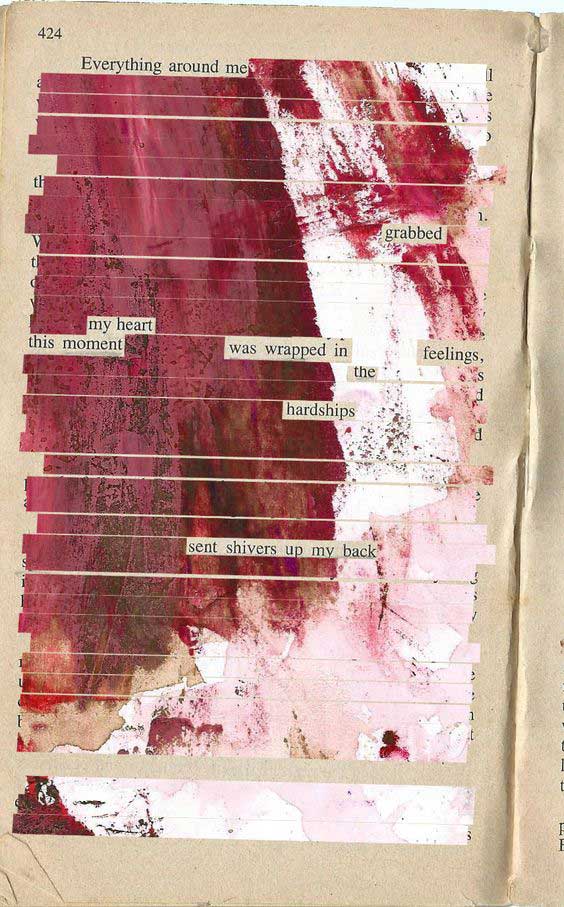
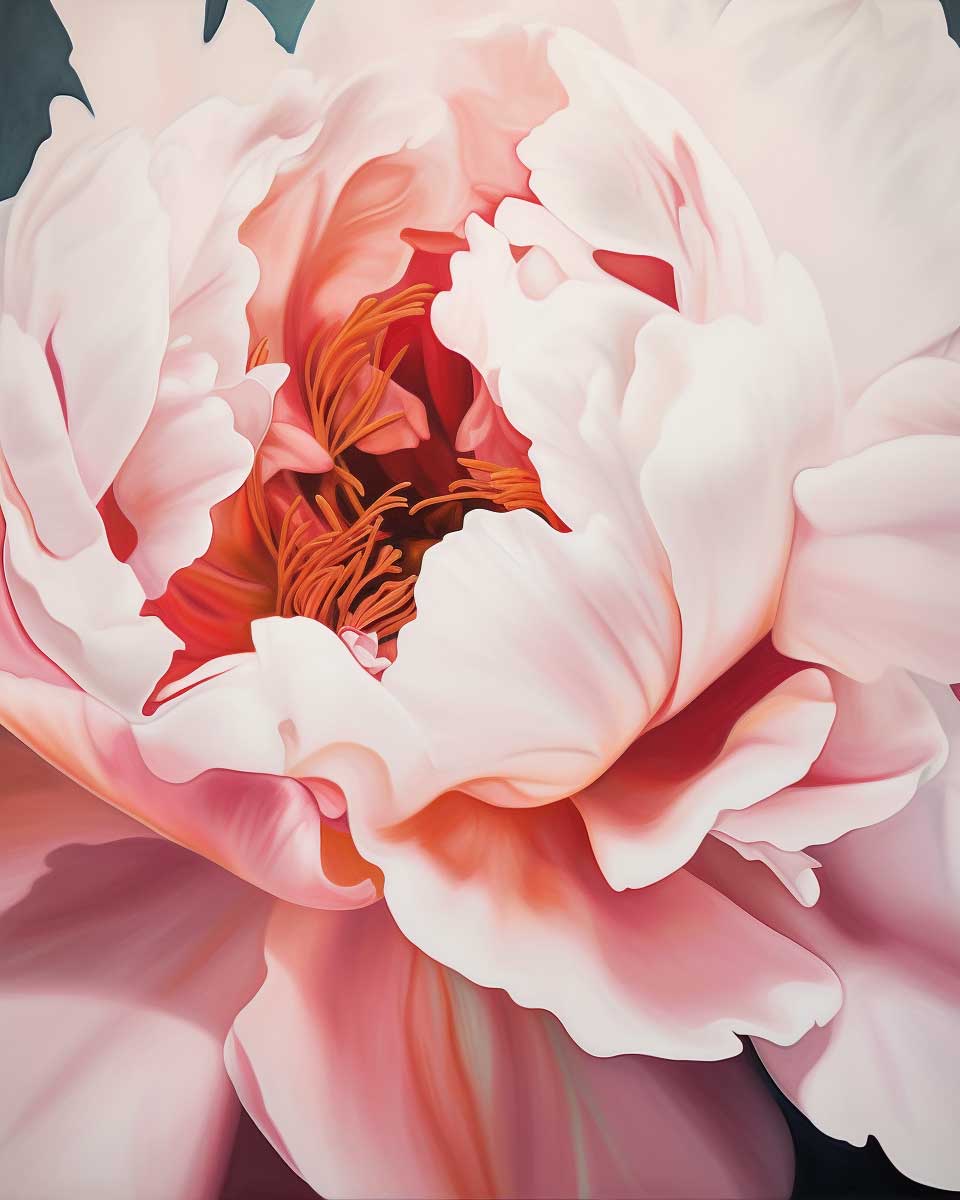
Georgia O'Keeffe's floral paintings are known for their bold and vibrant depictions of flowers up-close. Use her floral paintings as inspiration for your own explorations of flowers in your sketchbook. Choose a flower as your subject and closely observe its details, such as the petals, stems, and colors. I highly recommend buying yourself some flowers if you can or picking some from your garden. Spend some time examining the flower very closely. Do some sketches or take some close up photos with your phone. Experiment with different techniques, such as close-up cropping, exaggerated scale, and expressive brushwork, to create your own interpretations of O'Keeffe's iconic floral style.
If you are not able to work with a live flower then here’s a gallery of royalty-free photos I’ve curated for you…
Georgia O'Keeffe's artwork is known for its emotional intensity and poetic connection to the natural world. Choose a poem or an excerpt from a poem or song that evokes strong emotions, such as love, grief, joy, or longing, and use O'Keeffe's artwork as inspiration to create abstract emotional landscapes in your sketchbook. Consider how you can use O'Keeffe's artistic techniques, such as color symbolism and composition, to visually convey the emotions of the poem/or lyrics. Experiment with different art materials, mark-making techniques, and color palettes to create powerful visual representations of the poem's emotional landscape.
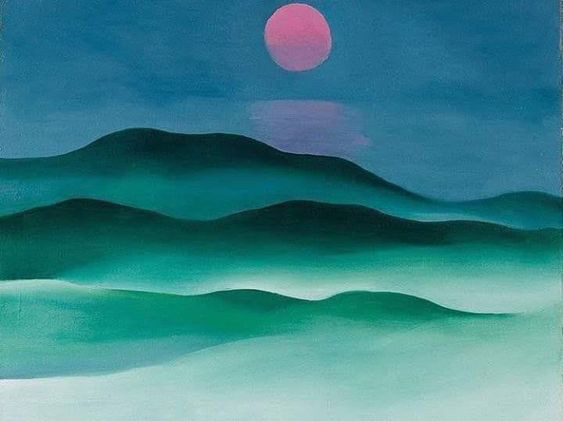
Although this is technically an encaustic class, it has wonderful projects and concepts regarding the dance between art and poetry. I highly recommend checking it out even if you don’t do encaustic art. The projects can be done easily with any mediums you like.
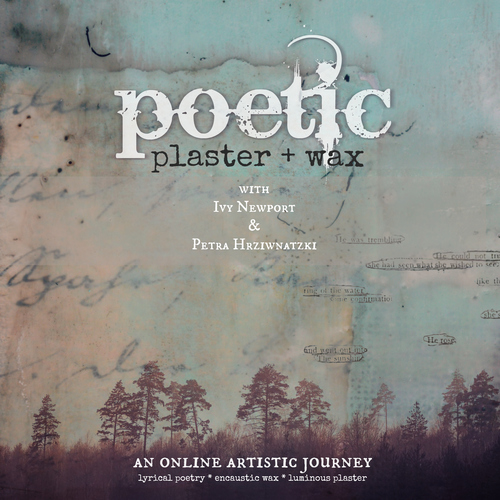
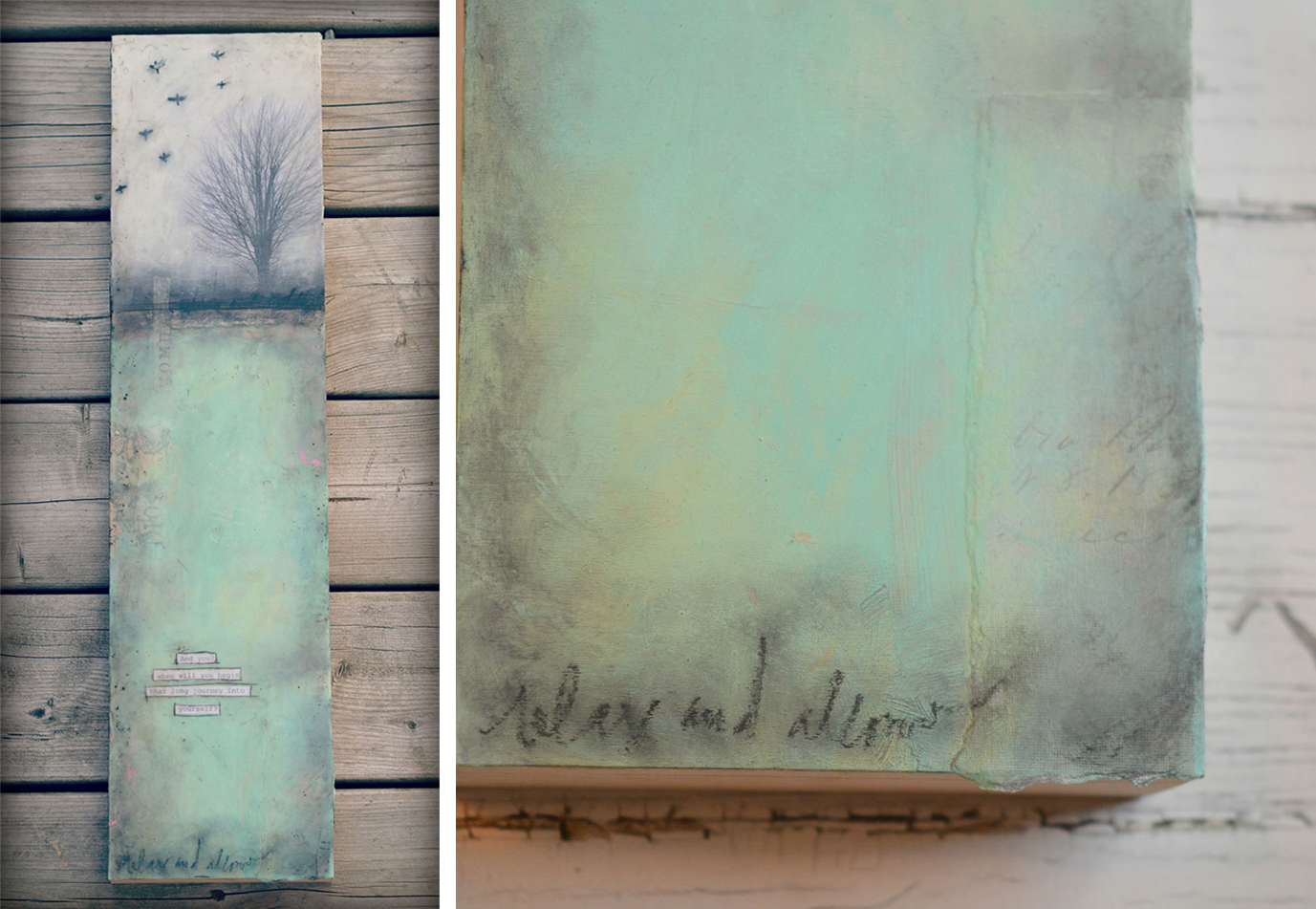
In this simple portrait, we will focus on using watery colors combined with soft pinks, greens and yellows. I have provided a line drawing that you can use to trace or transfer the portrait to your substrate. Please don’t hesitate to use this if you are not used to drawing faces or just want to get started right away!
I guide you through a simple watercolor layer and then we move to the beautiful PanPastels. This is my new favorite medium and I hope you will give them a go but if not, please use the mediums you enjoy the most! The important part is that you slow down, commune with Water, and express your creativity!

One of my favorite things to do is to curate inspiration. From Pinterest boards to books, resources, playlists and more - I love to share anything that might facilitate learning, expansion, and sparks of curiosity! Being an artist, we naturally crave these things so here are some of this month’s picks from me to you.
I had so much fun curating this list. I hope you enjoy!!
Here are just a few of our fantastic classes! I highly recommend checking them out if you haven’t already. Enjoy!